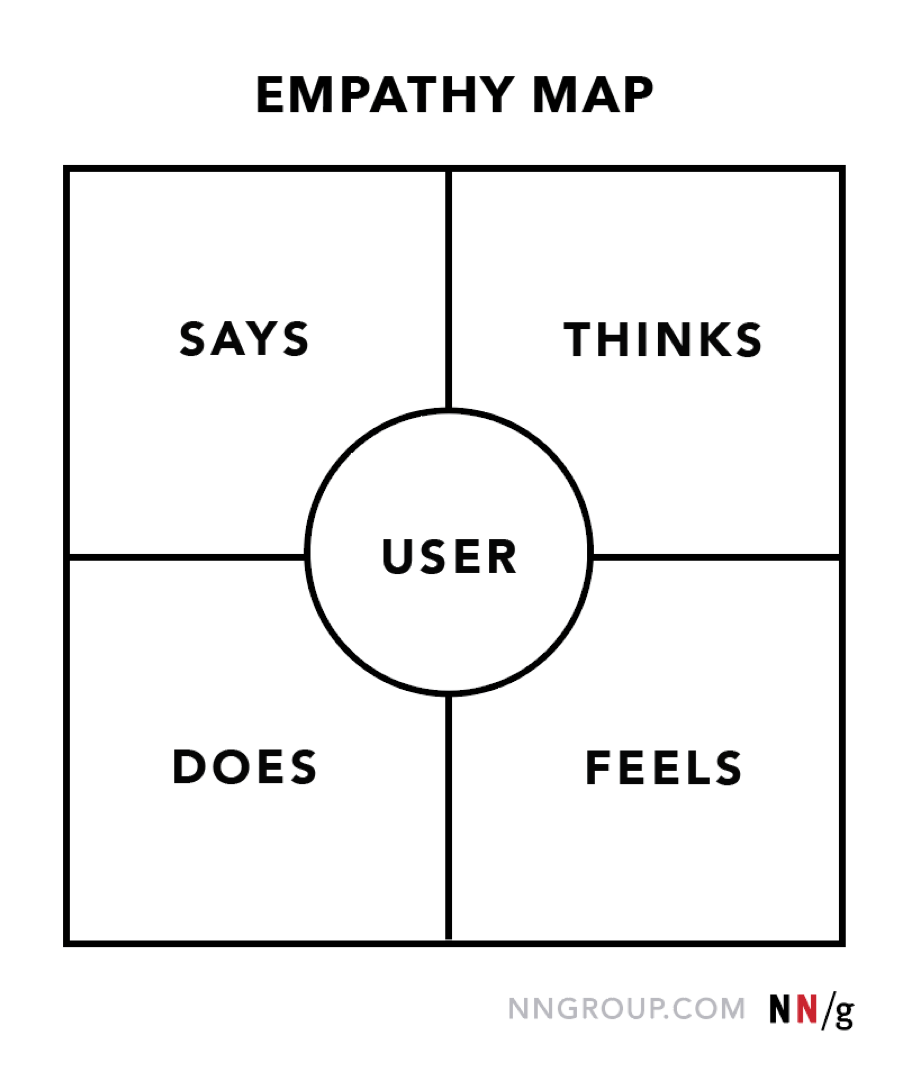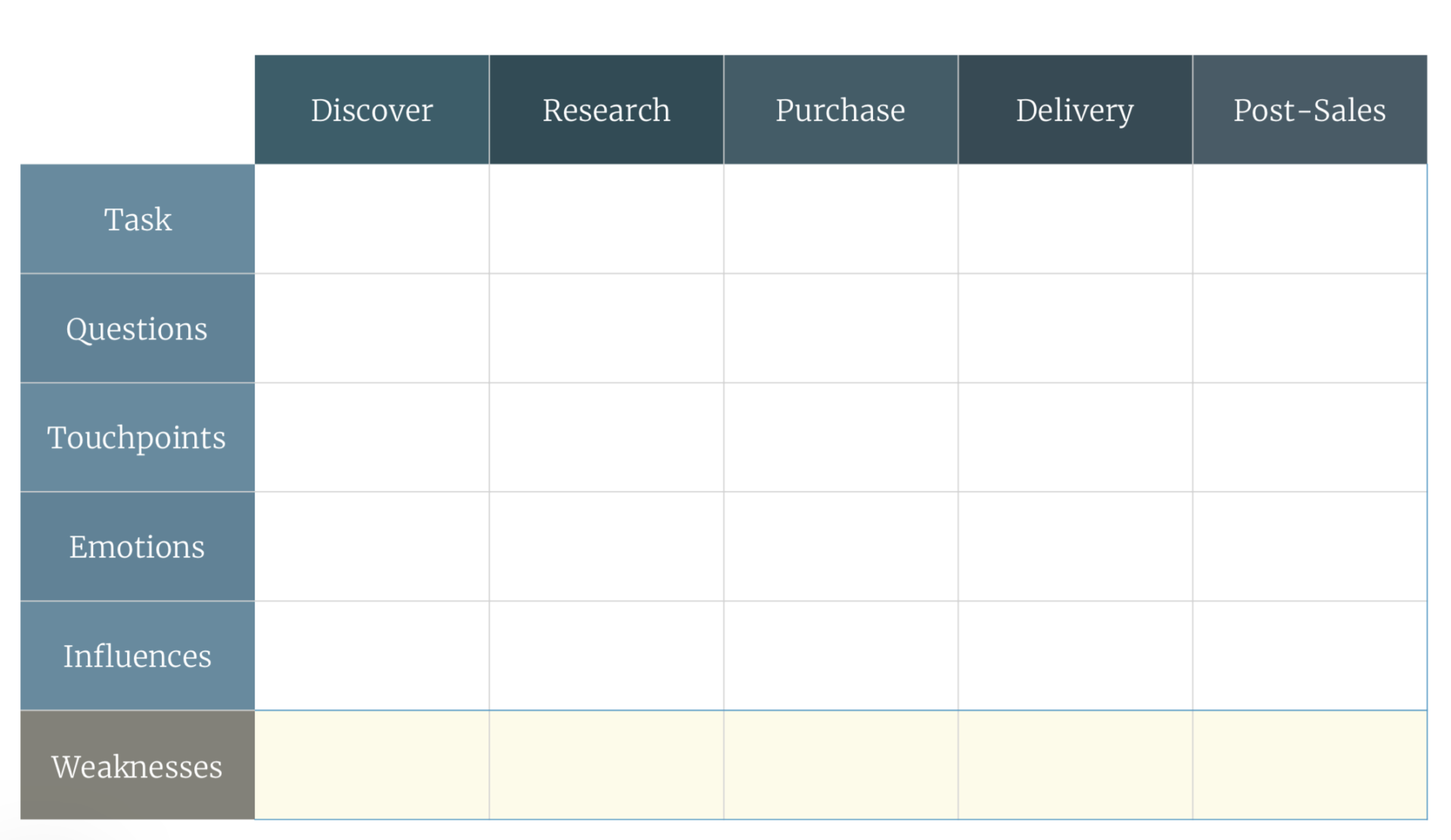-
Build an empathy map to understand customer needs
-
Design a customer journey for your customers
-
Create a successful website by building a prototype you can test
-
Analyze and measure the impact of your actions after a campaign is launched
The relationship with customers has changed, especially during the last decade. With social media and search engines, information has become easily available. This has forced businesses to change the way they communicate with their customers. Digital has made access to the information to be a lot easier and complex at the same time. Users’ behaviour is adjusting to that change by demanding information at a faster pace. In this scenario, only the companies with a user-centric marketing approach will be successful.
For businesses, the online world is offering the opportunity to compete with bigger players without having to spend big budgets. That is the reason why a lot of sectors are being disrupted and new players are coming into those sectors committing to do things differently.
With this in mind, traditional marketing can no longer adjust to the unique characteristics of the digital world. This requires us to adopt a more user-centric approach that allows us to listen and to have better communication with our potential customers.
Build an empathy map to understand customer needs
To understand the interests, objections and goals of our audience we need to really know them in order to persuade them to take action. That’s why using buyer personas to define customer journey is not enough. A better approach to research your audience is to ask the right questions to customers.
And how to do that?
Simple, by connecting emotionally with your users.
To know better your user, a great tool to do that is the use of empathy maps. They are indeed somehow similar to personas but they have some unique features that are worth considering if you really want to know your users.

As you can see in the picture above an empathy map is not very different from a buyer persona. Instead of focusing on who the customer is, how much they earn or where do they live, we focus more on what they are trying to achieve.
This method will give you a better overview of what tasks a customer wants to achieve, what are their goals and pain points and what can influence their decision-making process. Is diving deeper into how customers feel when they purchase an item or want to select a professional service provider? Is going a step further that only using personas, since it only helps gather more superficial information about a user.
Design customer journeys for your users
Once you have defined an empathy map for your users, and you have performed user research is time to dive into customer journey mapping. Customer journeys are an approximate visualization of the steps a customer is going to take. These steps are not 100% accurate but they do constitute the main steps a customer can take and what questions they might have along the way and what tasks they are trying to accomplish.

The good thing about customer journeys is that you can easily track what readjustments need to be made and what steps can be improved. Not only that, but you can also apply it in various situations, such as product purchase, email marketing campaign and more. It helps you see where you should invest in your budget to obtain a more effective result.
In a nutshell, customer journey mapping helps your organization visualize what you know about your audience, and how users interact with your business. More importantly, when you are preparing the next marketing campaign you can see where they fit into your broader picture and support that customer journey.
Create a successful website by building a prototype you can test
Before committing to investing in building a website from scratch is better to first build a cheap prototype of the same website and test all the website before. Although is true that creating a prototype and testing it might be time-consuming, the reality is that is going to save a lot of effort and money in the long run. This process avoids countless mistakes that can happen during the development process if there is not a clear goal of what needs to be achieved.
Tools such as Balsamiq or even a Word Document or PowerPoint are perfect to start drafting that first version of your project. To create an effective marketing campaign through your website you should accomplish the following things:
- Do the users understand the basic concept
- Can they find stuff
- Can they do stuff that allows them to finish their goal
If your prototype answers easily those questions you will have no problems and will be able to continue developing your prototype, otherwise, you should continue working on the missing pieces.
Let’s go a step further in testing the usability of your prototype and to do that you can use experiments such as unfacilitated usability testing to ensure the growth of your conversion rate. Unfacilitated usability tests are a more affordable alternative to traditional in-person testing experiments. With this type of testing, you can give the user a task to complete such as making a purchase on your eCommerce store. The user, in this case, will be tested remotely and have their screen recorded and with a web camera on to hear what they are saying. There are a couple of challenges that happen, such as:
- You cannot make questions to the users
- Is more difficult to target qualified users
- Different time zones
All these challenges can be overcome by using tools such as Lookback.io or Maze, that provide you with the necessary resources to perform these tests.
Analyze and measure the impact of your actions after a campaign is launched
After launching a campaign the job does not end there. There are still things to do such as testing the results of your campaigns and what can be improved. With the help of tools such as heatmaps, you can see what the user does on the website and if everything you have planned works so far. Tools such as Hotjar or VWO can be of great help to analyze and A/B test new features.
Most importantly, you don’t need to have a lot of traffic on your website to be able to do this task. Running A/B tests allows you to make incremental improvements to your website and analyze those aspects that need to be redone or adjusted to increase your conversion rate.




